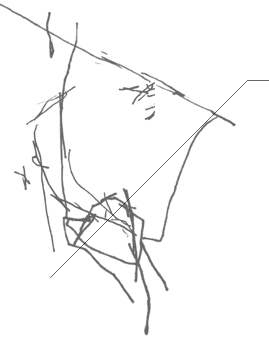Monday, December 22, 2025 |
||

|

by Michael Goldberg
Monday, January 27, 2003
When Artists Find Their 'Voice'
Why do we have different rules for recording artists and
visual artists?
|
|||
|
The artist Viola Frey creates gigantic ceramic human forms. In her
10,000-plus square foot Oakland studio, mere humans are dwarfed by
the towering figures that are her life's work.
These figures, which might vaguely remind you of the work of both Picasso and Matisse, are stylistically similar. In other words, at some point in her youth, Frey's own unique style emerged, and it has not changed significantly since then. Each ceramic figure she makes is unique, and yet all of them are recognizable as being the work of Viola Frey, as if they were members of the same family. Frey is, of course, just one of many artists who spend years creating many, many works that resemble each other stylistically, though the content of each might be different. Consider the work of Mark Rothko, for instance. But one could go back much further — to Van Gogh, say, whose work could serve as an example of this. Artists may dramatically change their style (as Picasso did several times), but more often they address a theme using the same style, again and again, year after year. And we don't have a problem with that. We don't go to an exhibit of Rothko's work and complain that he's "repeating himself." Rather, we enjoy the subtle differences between paintings. Yet, when it comes to recording artists, some of us expect something new and different with each new album. If an artist simply delivers 10 or 12 new songs that are stylistically similar to the songs on their last album, we get upset. Time and again, one music writer I know dismissed albums simply because they sounded like the artist's previous recordings. Several critics I know have complained that Tom Waits was repeating himself with his last two albums, Blood Money and Alice. Yet Waits is a rarity among rock and pop artists — he actually changed his style! He made many albums that had a kind of beatnik jazz sound, and then, with the help of his wife, reinvented his music. With 1983's Swordfishtrombones, Waits took his sound into a whole new realm, pulling in blues and odd sonic elements, and incorporating the feel of Kurt Weill and Bertolt Brecht (as well as Captain Beefheart and the Magic Band). Blood Money and Alice may or may not be as strong as, say, Mule Variations. I have my opinion, but that's not the point. All three have some outstanding songs. I'm certain that, a decade or so from now, when critics are considering what is Waits' best work, they will include songs from all three of those albums, and many others. Why do we expect the recording artists we like to be magicians, dazzling us with new tricks each time they release an album? Perhaps we got trained by The Beatles, who seemed to morph and evolve from album to album and, sometimes, from song to song. Dylan, too, constantly surprised us with each new album, between the early '60s and the mid-'70s. Miles Davis is applauded for the many changes his music went through over the years. But all recording artists don't have to be Dylan or The Beatles. Coming up with a new sound, or at least a sound that seems different from what was on the last album, does not automatically make one a great artist. I would much prefer that Tom Waits and his wife spend their creative time writing the wonderful songs they write than worrying about coming up with another novel musical approach. Though I greatly like his work, Beck may be a perfect example of how pointless it can be to jump from style to style. With Odelay, Beck seemed to be finding his own sound. Working with the Dust Bros., he came up a sound that worked perfectly with his lyrics. But then, instead of pushing deeper into that sound and really exploring it, he dabbled in various other styles, including Prince-influenced funk and, most recently, '70s folk-rock. While I enjoy Beck as Nick Drake and Beck as Neil Young (examples of each can be found on Sea Change) I'd much prefer to simply hear Beck getting to the bottom of who Beck is, on album after album. Walking through Viola Frey's studio the other day, I found it immensely satisfying to see rooms full of ceramic figures that all looked like the work of Viola Frey. She didn't have to imitate Rodin or Henry Moore or Judy Chicago or Robert Arneson. She'd found her own style decades ago, and was smart enough to go with it. |
||||